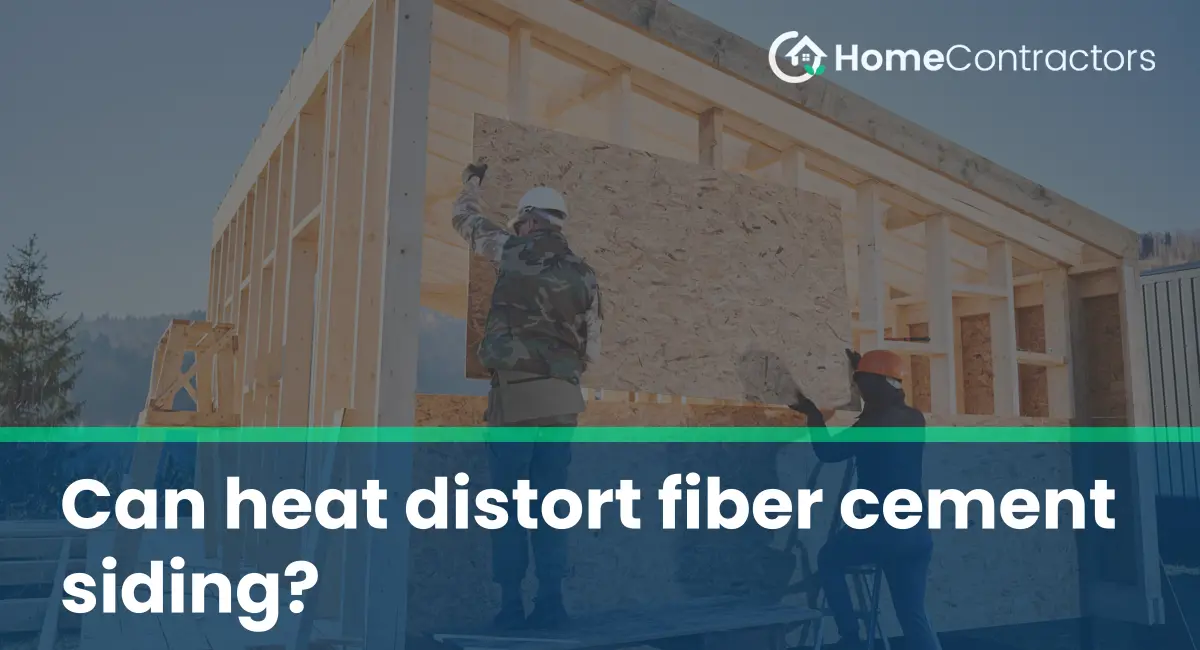Fiber cement siding has become increasingly popular in the construction industry due to its durability and low maintenance requirements. Made from a mixture of cement, sand, and cellulose fibers, this siding material offers excellent resistance to natural elements like moisture, pests, and fire. However, homeowners often wonder if fiber cement siding can be distorted by heat. In this article, we will investigate whether heat can indeed distort fiber cement siding and explore the factors that may contribute to such distortions.
Understanding Fiber Cement Siding:
Before delving into the effects of heat on fiber cement siding, it is crucial to understand the composition of this material. As mentioned earlier, fiber cement siding is primarily composed of cement, sand, and cellulose fibers. These ingredients are blended together to form a sturdy board that can mimic various other types of siding, such as wood, stucco, or stone. Fiber cement siding is known for its durability, resistance to external forces, and ability to retain its shape over time.
Properties and Resistance to Heat:
Fiber cement siding possesses several properties that help it withstand high temperatures without significant distortion. The cement and sand within the siding act as a barrier, slowing down the transfer of heat through the material. Additionally, the cellulose fibers help reinforce the cement, making the siding less prone to deformation caused by heat.
Factors Contributing to Distortion:
While fiber cement siding is generally heat-resistant, there are factors that can increase the likelihood of distortions occurring. Here are a few notable considerations:
- Extreme Temperatures: In regions with extremely high temperatures, prolonged exposure to intense heat can affect fiber cement siding. Direct and long-lasting exposure to sunlight, especially during hot summer months, can result in the expansion of the siding boards, potentially leading to slight distortions.
- Incorrect Installation: Improper installation can also contribute to the distortion of fiber cement siding. If the siding is not installed with sufficient gaps for expansion and contraction, excessive heat can cause the boards to buckle, warp, or deform.
- Proximity to Heat Sources: The proximity of fiber cement siding to heat sources could exacerbate the potential for distortion. For instance, if the siding is installed too close to a grill, fireplace, or heating vent, the localized heat may cause the siding to warp or become disfigured.
Prevention and Maintenance:
To prevent heat distortion in fiber cement siding and maintain its integrity, there are a few steps homeowners can take:
- Ensure Proper Installation: It is crucial to have fiber cement siding installed by experienced professionals who adhere to manufacturer guidelines. Proper installation with appropriate gaps for expansion and contraction can significantly reduce the risk of distortion.
- Utilize Cooling Techniques: In regions with extremely high temperatures, consider using techniques like shading or adding insulation to protect the siding from excessive heat exposure. These measures can help maintain a stable temperature around the siding and reduce the potential for distortions.
- Regular Inspections and Maintenance: Periodic inspections of the siding can help identify signs of distortion or damage caused by heat. Prompt repairs can prevent further issues and prolong the lifespan of the siding.
While fiber cement siding is generally resistant to distortion caused by heat, extreme temperatures, improper installation, and proximity to heat sources can increase the risk of deformations. Homeowners can mitigate the potential for heat-related distortions through proper installation, implementing cooling techniques, and regular maintenance. By taking these precautions, homeowners can ensure their fiber cement siding retains its attractive appearance and durability for years to come.
